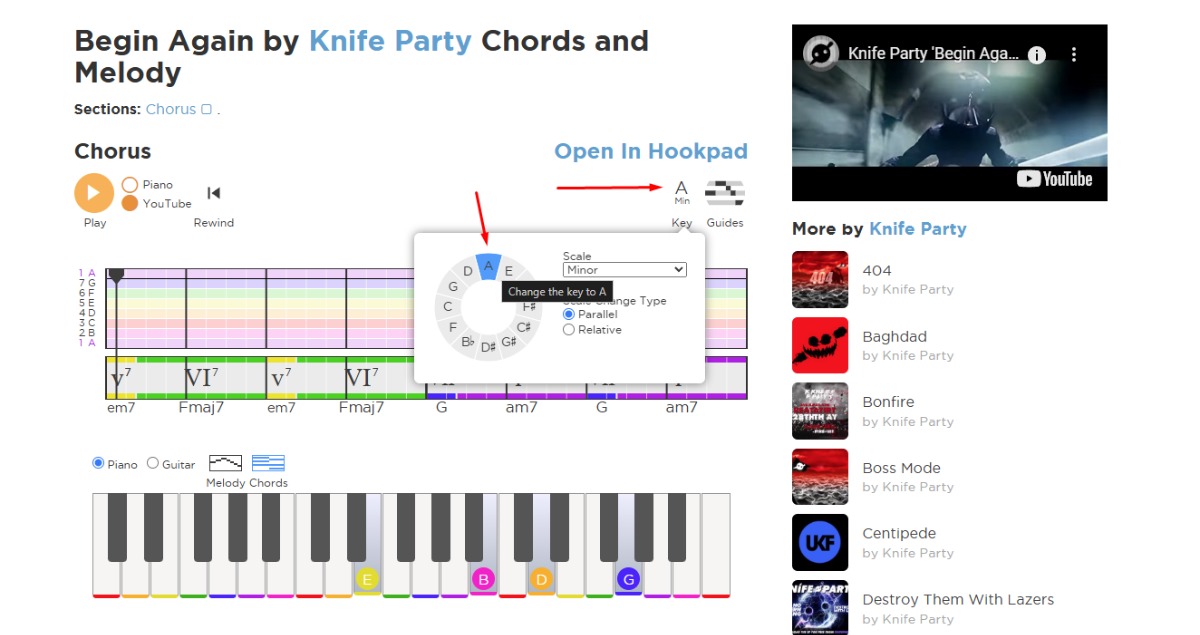Here’s a simple trick I use to write better chord progressions — even without deep theory knowledge.
Go to hooktheory.com/trends, pick a song, then click the Key button and switch it to A minor or C major.

This puts all the chords on white keys, making them easier to analyze and compare.
🎯 This helps you:
Spot common progressions
Notice borrowed chords (they appear striped)
Understand harmony without overthinking it
🎛️ Want to go further? Let’s talk voicings.
Voicings are just different ways to arrange the notes of a chord.
You keep the same chord — but change the feel depending on how it’s played.
🎹 Try this with an Amin9 chord, always keeping A as the bass note:
A–C–E–G–B (standard voicing – smooth and full)
A–E–B–C–G (open voicing – wider and lighter)
A–G–B–C–E (tighter voicing – more emotional)
A–B–C–E–G (clustered voicing – rich and tense)
Even with the same notes, each voicing creates a totally different vibe — while keeping A in the bass keeps everything grounded.
If you use a DAW like Ableton Live or FL Studio, try using its midi transpose function to shift everything to a different key while playing in A minor or C major — that way, you can jam using only white keys and still stay compose in other keys.
